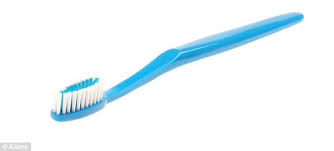Halitosis is foul odour emanating from the mouth. It’s not a medical emergency, of course, but some 25 to 30 percent of the world’s population suffers with this distressing problem.
The origins of bad breath are not mysterious: dental cavities, gum disease, poor oral hygiene, coated tongue (a white or yellow coating on the tongue, usually due to inflammation) are among the most common.
Hundreds of bacteria live in our mouths and some of them—on the tongue or below the gumline or in pockets created by gum disease between gums and teeth, for example—create sulfurous smells. Other causes may include malnutrition (fat breakdown gives your breath a fruity odor), uncontrolled diabetes, and dry mouth (saliva has an antimicrobial effect). Infections such as sore throat or sinusitis, or intestinal disorders, such as heartburn, ulcers, and lactose intolerance, also result in bad breath.
The most common symptoms of bad breath include post-nasal drip, a bitter metallic taste, a white coating on the tongue and thick saliva.
Most symptoms of bad breath depend on the underlying cause of bad breath. Many individuals who suffer from bad breath because of dry mouth can experience difficulty speaking, difficulty swallowing, a burning sensation in the mouth or dry eyes. Fever, sore throat, persistent cough and swollen lymph nodes in the neck indicate respiratory tract infections which can also mean bad breath.
One of the best ways to find out if you have bad breath is to lick the inside of your wrist, wait five seconds and then take a whiff.
Bad breath can be intermittent as well. Food and drink, such as garlic, onions, coffee, and alcohol, can temporarily cause bad breath. Smokers also suffer from it. Whatever the cause, treatment involves correcting the underlying disorder—and/or perhaps trying a few easy solutions from 500 TIME-TESTED HOME REMEDIES AND THE SCIENCE BEHIND THEM.
If you wear dentures, remove them at night and clean to get rid of bacterial buildup from food and drink.
Drink plenty of water and swish cool water around in your mouth. This is especially helpful to freshen “morning breath.”
Brush after every meal and floss, preferably twice a day. Replace your toothbrush every two to three months. Arrange regular dental checkups and cleanings.
Scrape your tongue each morning with a tongue scraper or spoon to decrease the bacteria, fungi, and dead cells that can cause odor. Hold the tip of the tongue with gauze to pull it forward in order to clean the back of the tongue.
Chew a handful of cloves, fennel seeds, or aniseeds. Their antiseptic qualities help fight halitosis-causing bacteria.
Chew a piece of lemon or orange rind for a mouth- freshening burst of flavor. (Wash the rind thoroughly first.) The citric acid will stimulate the salivary glands—and fight bad breath. Chew a fresh sprig of parsley, basil, mint, or cilantro. The chlorophyll in these green plants neutralizes odors.
Try a 30-second mouthwash rinse that is alcohol-free (unike many off-the-shelf products). Mix a cup of water with a teaspoon of baking soda (which changes the pH level and fights odor in the mouth) and a few drops of antimicrobial peppermint essential oil. Don’t swallow it! (Yields several rinses)
Raw crunchy foods clean the teeth. Apples contain pectin, which helps control food odors and promotes saliva production. Cinnamon is antimicrobial. Active cultures in yogurt help reduce odor-causing bacteria in the mouth.
1 cup apple chunks, 1 cup grated carrot, 1 cup diced celery, ½ cup dried cranberries, ½ cup crushed walnuts, 3 to 5 tablespoons plain nonfat yogurt and ground cinnamon.
PREPARATION AND USE: Mix the apple, carrot, celery, cranberries, and walnuts together in a large bowl. Add yogurt by the tablespoon to moisten the mixture. Sprinkle with cinnamon. (Serves two) Save Your Breath!
Hello Visitors!
Jobs and similar opportunities like this are listed daily on our platforms, and as such, it is important to take due advantage of that.
Here is how:
- Kindly Click here and add your valid email address to get updates directly to your mail. Remember to click on the confirmation link in your mail.
- Next, click here to visit our jobs listing Portal for latest Job positions.
- Alternatively, you can visit here to see top companies recruiting, or check out latest jobs in your state or latest Jobs in your industry of interest.
- Pick your area of interest.
- Read the requirements,
- Next, apply.
- Remember to always share this article with others.
- If website is down, kindly subscribe to our email notification, we will notify you once it is up.

